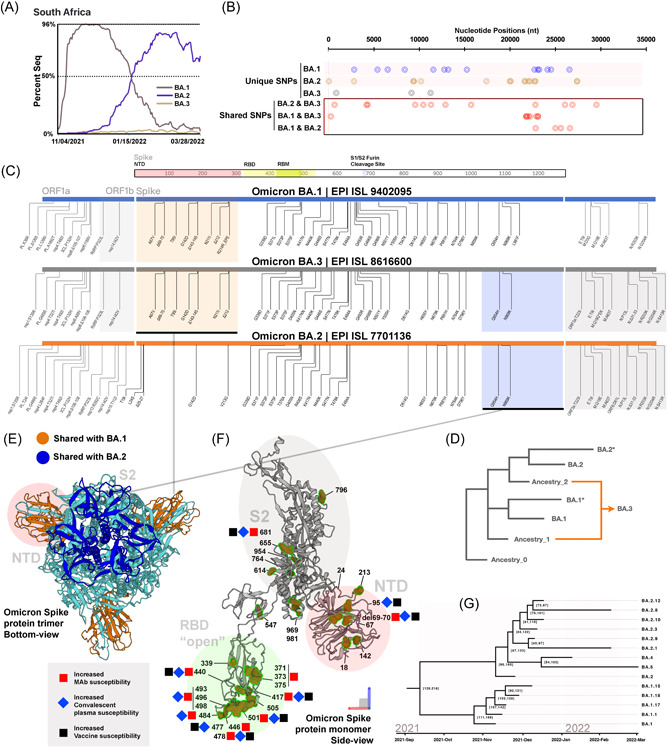Figure 5.

Omicron BA.3 shares mutations with BA.1 and BA.2. (A) Data obtained from GISAID showed the percent of sequence isolated from Omicron subvariant in South Africa between November 4, 2021 and March 28, 2022. (B) Unique and shared mutations of BA.1, BA.2, and BA.2. (C) Graphical illustration of amino acid comparison between Omicron subvariants, emphasizing Spike gene. Similar shared amino acid mutations were grouped and highlighted in orange (BA.1 and BA.3) and blue (BA.2 and BA.3). (D) Graphical illustration of potential ancestral lineages of Omicron BA.3. Hypothetical ancestry lineages were determined by comparing the ancestral BA.3 sequence against BA.1 and BA.2. (E) Shared mutations from BA.1 and BA.2 were illustrated using Omicron BA.1 Spike structure (PDB: 7TB4). Regions in the Spike protein were highlighted for NTD (red), RBD (green), and S2 (grey). (F) Mutations of all BA.3 sequences were labeled using the same structure. Sites are previously shown to have altered the susceptibility treatments, and vaccines were highlighted next to the amino acid. (G) The molecular clock of the Omicron main subvariants.
